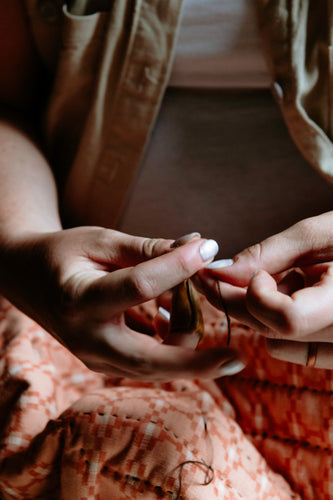Creating a simple quilt is a delightful project that allows you to express your creativity while enjoying the art of sewing. Whether you are a seasoned quilter or a beginner wanting to try your hand at this rewarding craft, this guide will take you through each step required to create a beautiful quilt. Quilting is not just about fabric and stitching; it’s about embracing the joy of handwork and the warmth that each comforting piece brings to your home. Let’s dive into the wonderful world of quilting!
Understanding the Basics of Quilting
Before you start your quilting journey, it’s essential to understand a few basics about the art of quilting. Quilting involves sewing together layers of fabric to create a nice, insulated blanket or quilt. This project usually consists of three layers: the quilt top, the batting (the insulating middle layer), and the quilt backing.
Essential Tools and Materials
Having the right tools and materials for your quilting project is crucial. Here’s a list of what you will need:
- Fabric: Choose a variety of colorful fabrics that inspire you! Cotton is a great choice for quilting.
- Rotary cutter and mat: These tools make cutting your fabric easier and more precise.
- Ruler: A clear quilting ruler will help you measure and cut your fabric accurately.
- Thread: Select a durable thread that matches or contrasts your fabric for appeal.
- Sewing machine: For efficiency and speed, especially for beginners.
- Iron: Pressing your fabric before and after stitching will give your quilt a professional finish.
Once you have gathered your materials and tools, you’re ready to start sewing your first quilt!
Step 1: Choosing Your Quilt Design
Start by determining the design and style of your quilt. You can opt for a classic patchwork pattern or something more modern. Many quilters start with a simple square patchwork quilt, which is perfect for beginners. Sketch out your desired layout and think about how you want to arrange the colors. Visualizing your end product can help inspire your fabric choices.
Step 2: Cutting the Fabric
After choosing your design, it’s time to cut your fabric according to your sketches. Here’s how to do it:
- Lay your fabric flat on the cutting mat.
- Using the rotary cutter and ruler, measure and cut the fabric into squares. Most beginners often start with 5-inch squares, but feel free to adjust the sizes as you see fit.
- Cut enough squares to make up your quilt top, remembering to think about a border if you want to add one.
Proper cutting is essential in quilting, as it directly affects the size and seamlessness of your future stitching. Accuracy in this step will lead to a smoother quilting process.
Step 3: Assembling the Quilt Top
Now that you have all your squares cut, it’s time to assemble them into the quilt top. This is where you can get creative with your layout!
Piecing the Quilt
Follow these steps to piece your quilt together:
- Begin by arranging your squares on a flat surface to gauge how they look together.
- Once you’re satisfied with the layout, begin sewing the squares together. Start with two squares. Place them right sides together and sew along one edge using a quarter-inch seam allowance. Press the seams open.
- Continue adding squares, row by row, until the quilt top is fully assembled.
Remember to trim any excess fabric at the edges to ensure your quilt top is straight and aligned properly.
Step 4: Adding the Batting and Backing
With your quilt top finished, it’s time to add the batting and the backing:
- Cut the batting to match the size of your quilt top.
- Lay the backing fabric on a large surface with the right side facing down.
- Place the batting on top, followed by the quilt top, right side facing up.
- Ensure everything is aligned and smooth out wrinkles.
This layering is crucial for achieving that comfortable, cozy quilt you desire. The batting adds warmth and loft, while the backing helps protect your quilt over time.
Step 5: Basting Your Quilt
Basting holds all the layers together before you start stitching. It prevents shifting and keeps everything in place. You can use long quilting pins, safety pins, or a basting spray.
Basting Tips
Here are a few tips to make your basting easier:
- Work in a large, open space to maneuver the quilt effectively.
- Start from the center and work your way out to minimize wrinkles.
- Space the pins or stitches approximately 4-6 inches apart for adequate support.
Step 6: Quilting
Now for the fun part – stitching the layers together! You can quilt it by hand or use a sewing machine, depending on your comfort level.
Hand Quilting vs. Machine Quilting
Hand quilting gives a personal touch and is a great way to showcase your handwork skills, but it can be time-consuming. Machine quilting is faster and often yields more consistent results. Choose whichever method feels most comfortable for you!
Quilting Techniques
When it comes to stitching, you can choose from various techniques:
- Straight Line Quilting: Use straight lines to stitch across the quilt in a grid pattern.
- Free-motion Quilting: Offers more creativity by allowing you to move the fabric freely while stitching.
- Echo Quilting: This method involves stitching around a shape or design to create a layered look.
Step 7: Trimming and Binding the Quilt
Once you complete the quilting, it’s time to trim any excess batting and backing fabric. Aim for even edges for a professional finish. After trimming, you’ll need to bind the edges of your quilt.
Creating the Binding
To create the binding:
- Cut fabric strips that are 2.5 inches wide. The length should be long enough to go around the perimeter of your quilt.
- Join the strips at a 45-degree angle to create a continuous strip.
- Fold each strip in half lengthwise and press.
- Pin it to the edges of the quilt, matching the raw edge with the quilt's edge. Stitch the binding on and fold it over to the back side, hand-stitching it down for a finished look.
Step 8: Finishing Touches
Your quilt is almost complete! Take the time to add any final touches:
- Check for any loose threads or mistakes you might want to correct.
- Give the quilt a gentle wash for that cozy, crinkled effect – just remember to follow care instructions for your chosen fabric!
- Consider adding a label or a unique touch, like a decorative stitch or embroidered detail.
A Quilter’s Delight: Embracing Your Finished Project
You’ve done it! By following this step-by-step guide, you’ve created your very own quilt to showcase your sewing and handwork skills. As you lay it over your couch or gift it to a loved one, take a moment to revel in your achievement. Each stitch holds a story, and every piece of fabric has meaning.
Creating a quilt is not just another DIY project; it’s an opportunity to unwind and embrace a beautiful tradition that has been passed down through generations. You’ve discovered the joy of quilting, and now you have a warm, personal piece that will bring comfort and joy for years to come.
As you embark on more quilting adventures, remember: the possibilities are endless, and each new quilt will teach you something unique. Enjoy the journey that lies ahead, and keep stitching your way to a fulfilling and colorful quilting experience!

